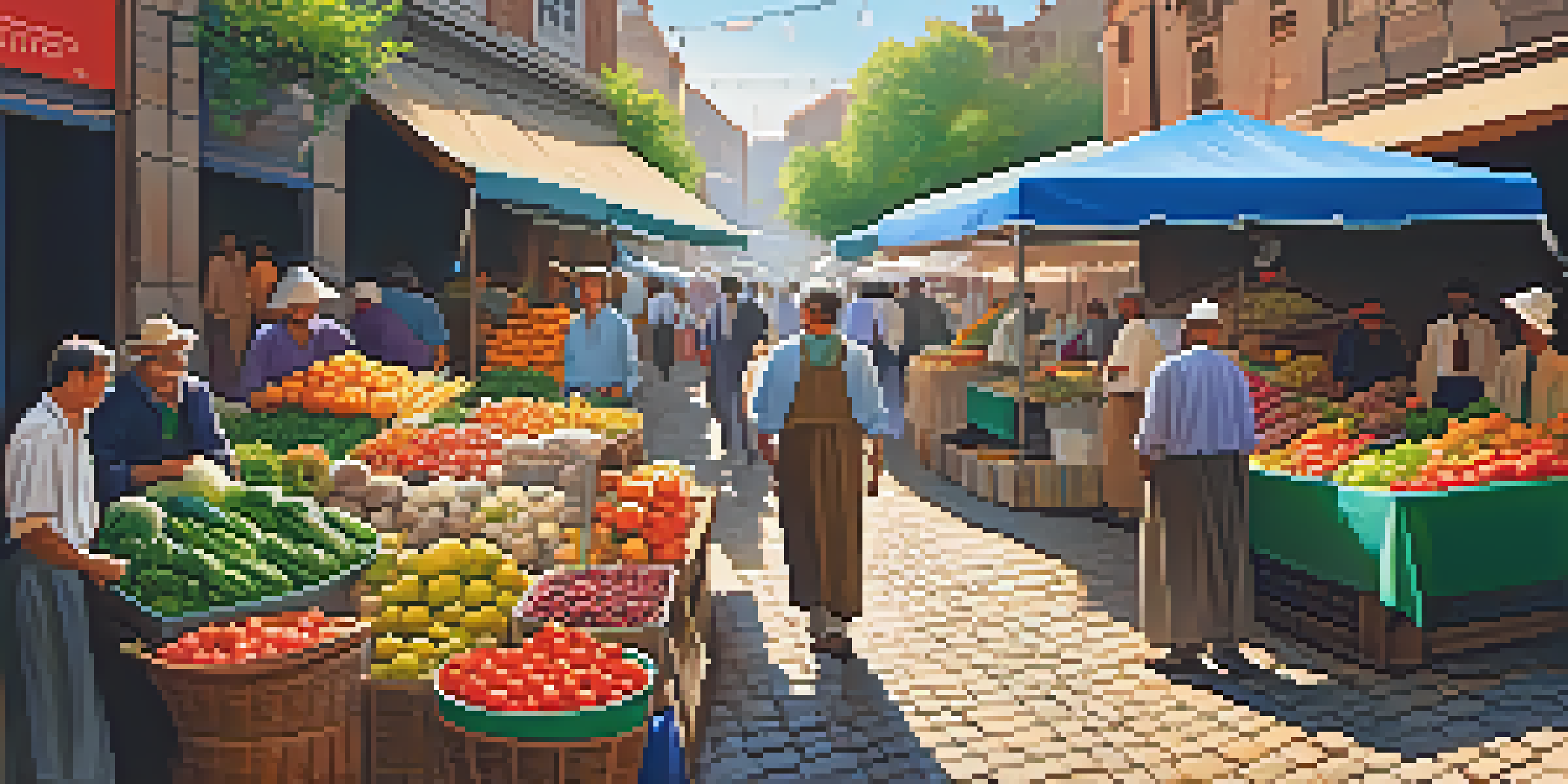Discovering Local Cuisine: A Culinary Journey in Every City

The Joy of Exploring Local Flavors in Your City
There's something uniquely satisfying about diving into a city's local cuisine. It’s like peeling back the layers of history, culture, and community with every bite. Whether it's a bustling market or a hidden café, each culinary spot tells a story worth tasting.
Food is our common ground, a universal experience.
When you choose to explore local cuisine, you’re not just eating; you’re participating in a cultural experience. Each dish often reflects the region's heritage and the people who live there, giving you a deeper appreciation of the area. Think of it as a delicious passport to understanding local traditions.
Moreover, local cuisine can often be an affordable way to enjoy a city’s culinary artistry. From street vendors to family-owned restaurants, these dining experiences provide not just sustenance, but a connection to the heartbeat of the community.
Must-Try Dishes That Define Each Region
Every city has its signature dishes that are a must-try for any foodie. For instance, New Orleans is famous for its gumbo, a rich stew that perfectly blends cultures and flavors. Similarly, Chicago is known for its deep-dish pizza, which is an experience in itself with its thick, buttery crust and layers of cheese.

These iconic dishes often represent the fusion of various cooking traditions and ingredients available in the region. Trying these local specialties can spark your curiosity about their origins and the stories behind them. It’s like tasting a piece of a city’s identity.
Savor Local Cuisine's Stories
Exploring local cuisine offers a unique glimpse into a city's history, culture, and community through its signature dishes.
As you embark on your culinary journey, don’t hesitate to ask locals for recommendations. They’ll often point you to hidden gems that showcase the true essence of their city’s cuisine, making your food adventures even more authentic.
Street Food: A Flavorful Gateway to Local Culture
Street food is often the heart and soul of any city’s culinary landscape. It offers a casual yet vibrant way to sample local flavors without the formality of a restaurant. From food trucks to market stalls, these vendors serve food that is often made fresh and bursting with flavor.
Cooking is like love. It should be entered into with abandon or not at all.
One of the best parts about street food is its accessibility. You can grab a quick bite while exploring, making it a perfect way to fuel your adventures. Plus, the prices are typically budget-friendly, allowing you to try a variety of dishes without breaking the bank.
Engaging with street vendors can also be a delightful experience. Many are eager to share the story behind their dishes, adding a personal touch to your meal and deepening your connection to the place you’re visiting.
Culinary Tours: Guided Adventures for Food Lovers
If you want to take your culinary exploration to the next level, consider joining a local food tour. These guided adventures can provide invaluable insights into the city’s gastronomic scene while introducing you to unique flavors you might not discover on your own. Think of it as a crash course in local cuisine!
On a food tour, you’ll often visit multiple locations in one outing, sampling signature dishes along the way. This not only fills your belly but also expands your palate, exposing you to a variety of cooking styles and ingredients. Plus, walking between stops allows you to take in the city’s sights and sounds.
Street Food: Affordable Delights
Street food serves as a vibrant, budget-friendly way to experience authentic local flavors while connecting with the community.
Culinary tours also often include stories and anecdotes from local chefs and food artisans. This personal touch enriches your dining experience, making it more than just a meal but a memorable learning journey.
The Role of Family Recipes in Local Cuisine
Family recipes play a crucial role in preserving the culinary traditions of a region. These cherished dishes are often passed down through generations, carrying with them the flavors and memories of family gatherings. When you taste a dish made from a local family recipe, you’re experiencing a slice of their history.
Many restaurants pride themselves on using family recipes in their kitchens, which adds authenticity to their offerings. It’s not uncommon to find dishes that have been refined over years, with each chef adding their unique touch while respecting the original flavors.
When dining out, don’t hesitate to ask about the origins of a dish. You might discover the heartwarming story of how it came to be, making your meal even more special.
Local Markets: A Treasure Trove of Ingredients
Visiting local markets is another fantastic way to dive into local cuisine. These vibrant spaces are filled with fresh produce, spices, and artisanal products that reflect the flavors of the region. Walking through the stalls, you can smell the fresh herbs and see the vibrant colors of fruits and vegetables, making it a feast for the senses.
Markets often serve as a community hub where locals gather, chat, and share recipes. This lively atmosphere can give you a sense of belonging and connection to the city. Plus, you might find unique ingredients to take home and recreate your own version of local dishes.
Culinary Tours Enhance Experience
Joining a culinary tour can elevate your food exploration, providing insights into local dishes and enhancing your overall dining adventure.
Don’t forget to try samples while you’re there! Many vendors are eager to let you taste their products, giving you a firsthand experience of the local flavors before you decide what to buy.
The Impact of Globalization on Local Cuisine
Globalization has significantly influenced local cuisines, introducing new flavors and cooking techniques. While this has led to exciting culinary fusions, it can sometimes blur the lines of traditional dishes. It’s fascinating to see how cities adapt and evolve their food scenes in response to global trends.
For instance, sushi has become a beloved dish worldwide, and you can find a variety of sushi styles in cities far from Japan. At the same time, many chefs are committed to preserving traditional recipes, striking a balance between innovation and heritage.

This interplay between old and new creates a dynamic food culture that continues to evolve. As you explore local cuisine, notice how different influences come together to shape the dining experience, making it rich and diverse.